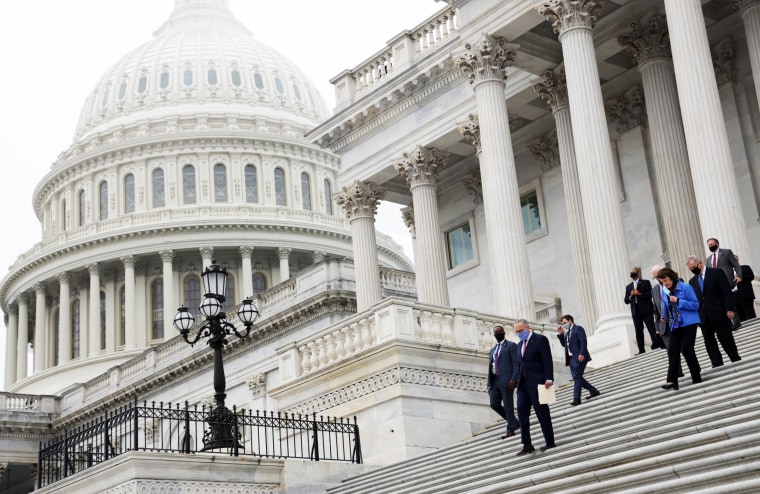For understandable reasons, there's an enormous amount of interest in the outcome of the presidential election, which remains uncertain. But nearly as significant is the race for control of the U.S. Senate, where the Democrats' path to a majority appears to be closing. NBC News reported overnight:
Democrats, who were winning fewer House seats than they had hoped, failed to pick up some of the Senate seats they were banking on.... By 3 a.m. on Wednesday, 47 seats were projected to be controlled by Republicans and 46 by Democrats, including two independents who caucus with Democrats. Seven seats were still outstanding.
As we discussed the other day, the arithmetic headed into Election Day was relatively straight forward: Republicans currently enjoy a 53-47 majority in the chamber. For Democrats, a net gain of three seats would create a tie, but effective Democratic control if the Biden/Harris ticket succeeds. A net gain of four seats would be necessary to claim a majority outright.
As of this minute, Democrats have 46 seats. That number may climb to 47 if Mark Kelly prevails in his Arizona race against Republican incumbent Sen. Martha McSally. (While several news organizations have already declared Kelly the winner, and the former astronaut delivered a victory speech overnight, NBC News has not yet called the race.)
That said, all kinds of possible pick-up opportunities for Democrats evaporated overnight. The party fielded qualified, well-funded candidates in Iowa, Kansas, Kentucky, Mississippi, Montana, South Carolina, and Texas, and in each instance, the Republican incumbent won anyway.
Making matters a bit worse for Dems, though Coloradans managed to replace incumbent Sen. Cory Gardner (R) with former Gov. John Hickenlooper (D), in Alabama, incumbent Sen. Doug Jones (D) lost to retired college football coach and failed hedge-fund manager Tommy Tuberville (R).
So, what's left? In alphabetical order:
Alaska: Incumbent Sen. Dan Sullivan (R) is generally seen as the favorite over Al Gross -- an independent who accepted the Democratic nomination -- but only about a third of the votes have been counted.
Georgia: With plenty of votes yet to be tallied, incumbent Sen. David Perdue (R) is narrowly leading Jon Ossoff (D), though a runoff is still possible if neither candidate reaches 50%. In Georgia's Senate special election, Raphael Warnock (D) was the top vote-getter in the large field, and he'll take on appointed incumbent Sen. Kelly Loeffler (R) in a January runoff.
Maine: Incumbent Sen. Susan Collins (R) appears to have a slight lead at this point over former state House Speaker Sara Gideon (D), but about a third of the votes haven't yet been counted, and Maine's unique ranked-choice system may tip the scales.
Michigan: Incumbent Sen. Gary Peters (D) appears to be slightly trailing John James (R), though as we're seeing in the presidential race, there are plenty of outstanding Michigan ballots, including from Democratic areas, still being counted.
North Carolina: Incumbent Thom Tillis (R) currently has a slight edge over Cal Cunningham (D), but it's among the too-close-to-call races.
Odds are, Mitch McConnell (R) will remain the Senate majority leader next year, but it's not yet a done deal.

